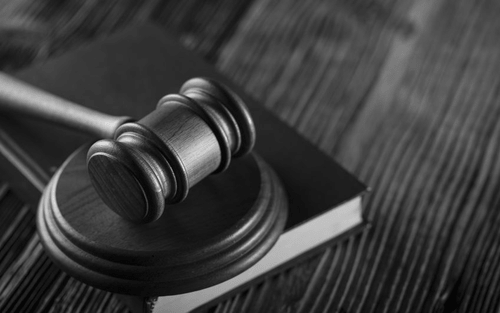When the government takes private property, it must compensate the property owner for this taking. Most often this happens in one of two ways, either by eminent domain or inverse condemnation. While the terms may be used interchangeably in everyday conversation, the processes are very distinct under the law.
Eminent Domain
To discuss inverse condemnation, we must first explain eminent domain. The term “eminent domain” is widely used in the United States. Black’s Law Dictionary defines eminent domain as: The inherent power of a governmental entity to take privately owned property, esp. Land, and convert it to public use, subject to reasonable compensation for the taking. North Dakota codifies eminent domain in North Dakota Century Code chapter 32-15, where it is defined as “the right to take private property for public use.”
In the most basic sense, when the government takes property from a citizen, the government must provide the citizen with reasonable compensation for taking that property. The most common example is when the government takes land from a private citizen in order for the government to construct public projects, such as roads, bridges, or public utilities. The North Dakota Attorney General provides a comprehensive overview of landowner rights under eminent domain laws.
In order for the government to take property by eminent domain, the government must serve the citizen with a summons and complaint and commence a lawsuit. The court will then determine whether the taking of property was for a public purpose and the reasonable compensation owed to the citizen.
Inverse Condemnation
But what if the government takes property without going through the court process? This is known as “inverse condemnation.”
The Fifth Amendment to the United States Constitution guarantees that private property shall not “be taken for public use, without just compensation.” U.S. Const. Amend. V. Article I, § 16 of the North Dakota Constitution likewise declares that “[p]rivate property shall not be taken or damaged for public use without just compensation having been first made to, or paid into court for the owner.” “‘Inverse condemnation actions are a property owner’s remedy, exercised when a public entity has taken or damaged the owner’s property for a public use without the public entity’s having brought an eminent domain proceeding.’” Aasmundstad v. State, 2008 ND 206, ¶ 15, 763 N.W.2d 748 (quoting Knutson v. City of Fargo, 2006 ND 97, ¶ 9, 714 N.W.2d 44). “To establish an inverse condemnation claim, a property owner must prove a public entity took or damaged the owner’s property for a public use and the public use was the proximate cause of the taking or damages.” Aasmundstad, at ¶ 15.
Bala v. State, 2010 ND 164, ¶ 8, 787 N.W.2d 761 (emphasis added).
Like an eminent domain action, the property owner has a right to a reasonable compensation of property taken by the government. Unlike eminent domain, the property owner, not the government, has to initiate a lawsuit in order to seek damages from the court.
The following are examples of inverse condemnation:
- Construction of road and storm sewer projects that caused flooding events on commercial property. Lenertz v. City of Minot, 923 N.W.2d 479 (N.D. 2019)
- Improving a dirt road to a paved road, constructing ditches, installing culverts, and standardizing the height and width of a road on private property. Lincoln Land Development, LLP v City of Lincoln, 924 N.W.2d 426 (N.D. 2019)
- Removing topsoil and clay from private property to build earthen dikes during a flood emergency. Irwin v. City of Minot, 860 N.W.2d 849 (N.D. 2015)
- Extending airport runway, closing section line road, and taking private property on either side of section line road. Gissel v. Kenmare Township, 512 N.W.2d 470 (N.D. 1994)
Exercise of Police Powers
The government may not be required to pay reasonable compensation to a property owner if the government is acting under its “police power.” This only applies when there is “imminent danger and an actual emergency giving rise to actual necessity” for the public entity to take property without later compensating the property owner. “The common law had long recognized that in times of imminent peril–such as when fire threatened a whole community–the sovereign could, with immunity, destroy the property of a few that the property of many and the lives of many more could be saved.”United States v. Caltex, 344 U.S. 149, 154, 73 S.Ct. 200, 97 L.Ed. 157 (1952).
Contact SW&L
If you have questions about inverse condemnation or eminent domain, or need help determining your rights against a government entity that has taken your property without just compensation, please contact us!








